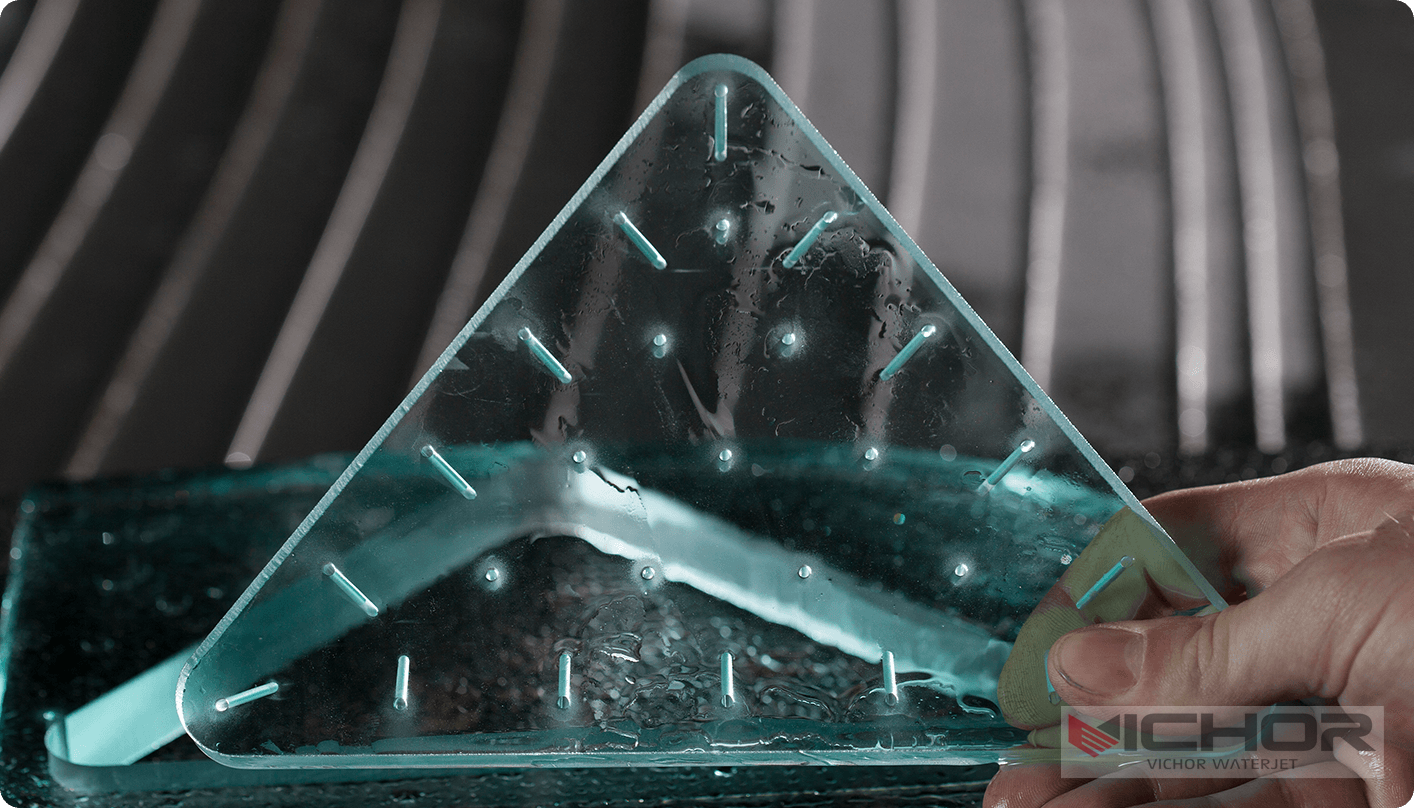
7 Essential Benefits of Waterjet Food Cutting Equipment for the Food Industry
In today’s fast-paced food processing landscape, efficiency, precision, and hygiene are paramount. One technology that has been gaining traction for its versatility and effectiveness is waterjet food cutting equipment. This innovative tool uses high-pressure water streams, often mixed with abrasives, to slice through a wide range of food products with unparalleled accuracy. From delicate pastries to tough frozen meats, waterjet food cutting equipment is revolutionizing how manufacturers handle food preparation. In this article, we’ll explore the core aspects of this technology, compare it with other methods, guide you through applications and selection, discuss costs, and delve into the technical details. Whether you’re a small-scale producer or a large industrial plant, understanding the advantages of waterjet food cutting equipment can help streamline your operations and boost productivity.
What is Waterjet Food Cutting Equipment?
Waterjet food cutting equipment utilizes a high-velocity stream of water, typically pressurized up to 60,000 psi or more, to cut through various food items. The system often incorporates a pump, nozzle, and control software to direct the waterjet with precision. In some cases, abrasive materials are added to enhance cutting power for harder foods. This method is non-thermal, meaning it doesn’t generate heat during cutting, which helps preserve the food’s texture, nutrients, and flavor. The versatility of waterjet food cutting equipment allows it to handle everything from soft fruits and vegetables to dense products like frozen fish or cheese blocks. By maintaining cleanliness and reducing waste, this technology supports sustainable food production practices. As a result, many industries are adopting waterjet food cutting equipment to meet growing consumer demands for quality and safety.
Comparing Waterjet Cutting to Other Food Cutting Methods
When evaluating cutting technologies for food processing, it’s essential to compare waterjet food cutting equipment with alternatives like blade cutting, laser cutting, and ultrasonic methods. Blade cutting, for instance, is common but can cause bruising, deformation, and cross-contamination if not properly maintained. Laser cutting offers precision but uses heat, which may cook or alter the food’s surface, leading to quality issues. In contrast, waterjet food cutting equipment provides a cold-cutting process that minimizes physical stress on the product, ensuring intact edges and reduced spoilage. Additionally, unlike mechanical blades that require frequent sharpening, waterjet systems have fewer moving parts, lowering maintenance needs. From a hygiene perspective, waterjet food cutting equipment can be easily sanitized, reducing the risk of bacterial growth. This makes it a superior choice for sensitive applications like ready-to-eat meals or organic products. Overall, the non-contact nature of waterjet cutting reduces product damage and enhances shelf life, giving it an edge in modern food manufacturing.
Applications and Selection Guide for Waterjet Food Cutting Equipment
The applications of waterjet food cutting equipment span across various sectors, including bakery, dairy, meat processing, and confectionery. For example, in bakeries, it can cleanly slice cakes, bread, and pastries without crushing them. In meat processing, waterjet food cutting equipment handles frozen meats and poultry with precision, reducing fat loss and improving yield. When selecting the right system, consider factors like production volume, food type, and facility space. For high-volume operations, automated waterjet food cutting equipment with robotic integration may be ideal, while smaller businesses might opt for compact, manual models. Key features to look for include adjustable pressure settings, easy-cleaning designs, and compatibility with food-grade materials. It’s also crucial to assess the equipment’s ability to handle specific food textures—softer items may require pure water jets, while harder foods might need abrasive-assisted cutting. By matching your needs with the capabilities of waterjet food cutting equipment, you can maximize efficiency and return on investment.
Finding the Right Supplier for Your Waterjet Food Cutting Needs
Choosing a reliable supplier for waterjet food cutting equipment is critical to ensuring long-term performance and support. Start by researching manufacturers with a proven track record in the food industry, focusing on those who offer comprehensive services like installation, training, and maintenance. Look for suppliers that provide customized solutions, as food processing requirements can vary widely. When evaluating potential partners, check for certifications such as ISO standards or food safety compliance, which indicate a commitment to quality. Additionally, read customer reviews and request case studies to gauge reliability. Many suppliers offer demo sessions or trial periods, allowing you to test the waterjet food cutting equipment in your environment. Don’t forget to inquire about after-sales support, including spare parts availability and technical assistance. By building a strong relationship with a reputable supplier, you can ensure that your waterjet food cutting equipment operates smoothly and adapts to evolving production demands.
Cost Analysis and Pricing Factors for Waterjet Food Cutting Equipment
The cost of waterjet food cutting equipment can vary significantly based on factors like system size, automation level, and additional features. Basic models may start from a few thousand dollars, while advanced industrial systems can exceed hundreds of thousands. Key cost components include the high-pressure pump, cutting head, and control software. Operating expenses, such as water consumption, electricity, and abrasive materials (if used), also impact the total cost of ownership. However, investing in waterjet food cutting equipment often leads to long-term savings through reduced waste, lower labor costs, and minimized downtime. For instance, the precision of waterjet cutting can increase product yield by up to 10%, offsetting initial expenses. When budgeting, consider financing options or leasing programs offered by suppliers to make the acquisition more manageable. It’s advisable to conduct a cost-benefit analysis comparing waterjet food cutting equipment with traditional methods to justify the investment. By understanding these pricing factors, you can make an informed decision that aligns with your financial goals.

In-Depth Look at the Technology and Process
The technology behind waterjet food cutting equipment involves a complex interplay of hydraulics, mechanics, and software control. At its core, a high-pressure pump intensifies water pressure, which is then directed through a narrow nozzle to create a focused jet. For tougher foods, abrasive garnet is introduced into the stream to enhance cutting power. The process is governed by CNC (Computer Numerical Control) systems, allowing for precise patterns and shapes, which is ideal for creating customized food products. One of the standout features of waterjet food cutting equipment is its ability to perform 3D cutting, enabling intricate designs for gourmet items. The equipment also includes safety mechanisms, such as emergency stops and containment systems, to protect operators. From a hygiene standpoint, many systems use stainless steel components and are designed for easy disinfection, complying with food safety regulations. As technology advances, innovations like AI integration and IoT connectivity are being incorporated into waterjet food cutting equipment, enabling predictive maintenance and real-time monitoring. This deep dive into the工艺 highlights why waterjet cutting is a sophisticated solution for modern food processing challenges.
Frequently Asked Questions (FAQs)
Q1: How does waterjet food cutting equipment maintain food safety and hygiene?
A1: Waterjet food cutting equipment is designed with food-grade materials, such as stainless steel, and features easy-to-clean surfaces that prevent bacterial buildup. The use of high-pressure water also helps flush away debris during operation, reducing contamination risks. Regular maintenance and sanitization protocols ensure compliance with industry standards like HACCP and FDA guidelines.
Q2: Can waterjet food cutting equipment handle frozen or hard foods?
A2: Yes, waterjet food cutting equipment is highly effective for cutting frozen foods, hard cheeses, and even bone-in meats. By adjusting pressure levels and optionally adding abrasives, the system can cleanly slice through dense materials without compromising quality or causing fractures.
Q3: What is the typical maintenance required for waterjet food cutting equipment?
A3: Maintenance for waterjet food cutting equipment includes routine checks on the pump, nozzles, and filters to prevent clogging. It’s recommended to inspect seals and hoses periodically and replace abrasive materials as needed. Most suppliers provide detailed schedules, and automated systems may offer self-diagnostic features to minimize downtime.
Q4: How does waterjet cutting compare to traditional methods in terms of waste reduction?
A4: Waterjet food cutting equipment significantly reduces waste by enabling precise cuts that maximize product yield. Unlike blade cutting, which can cause crumb loss or uneven edges, the waterjet’s narrow kerf minimizes material removal. This efficiency is especially beneficial for high-value foods, leading to cost savings and environmental benefits.
Q5: Is waterjet food cutting equipment suitable for small businesses or startups?
A5: Absolutely—many manufacturers offer scalable models of waterjet food cutting equipment that cater to small businesses. Compact, semi-automated systems are affordable and easy to operate, making them ideal for startups looking to enhance product quality without large upfront investments. Leasing options can also help manage costs.
In conclusion, waterjet food cutting equipment represents a transformative advancement in food processing, offering precision, versatility, and hygiene. By understanding its benefits, applications, and costs, businesses can make strategic decisions to improve their operations. As the industry evolves, adopting technologies like waterjet cutting will be key to staying competitive and meeting consumer expectations.
continue reading
Related Posts
- 1466 words7.4 min read



